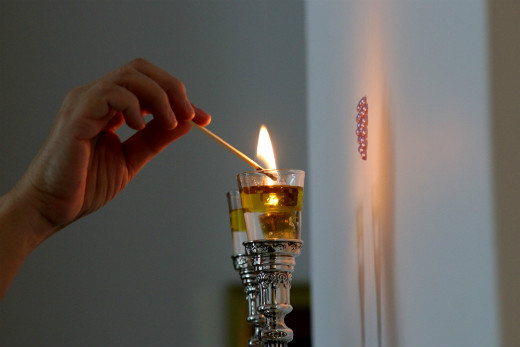Rabbi Tzadok HaKohen of Lublin taught that the source of any concept can be determined by examining the context in which it is first introduced in the Torah.
Applying this rule to the concept of kedushah, we find that the first time the Torah mentions this word is in the context of Shabbos. And thus we may conclude that Shabbos is the source of all kedushah. All holiness that exists during the week has its origins in Shabbos.
Developing this point further, our Rabbis teach that holiness manifests itself in three dimensions: olam, shanah, nefesh — in place, in time, and in people. Kedushah cannot exist in a vacuum; it needs a receptacle. And there are three such “receptacles” in which kedushah is contained: It is concentrated in place in the Beis HaMikdash, and particularly in its most sacred chamber, the Kodesh HaKodashim. In time, kedushah is found in the day of Shabbos, and regarding people, the Kohen Gadol is the holiest person. This concept is illustrated in dramatic fashion on Yom Kippur, called Shabbos Shabbason, the holiest day of the year; when the holiest person, the Kohen Gadol, enters the holiest place, the Kodesh HaKodashim — thus bringing together all three dimensions of holiness.

And so if Shabbos is the source of all kedushah, then it must be the source of all three dimensions of holiness — time, people, and place. Most obviously, it is the origin of the sanctity of time. We recite in our prayers on the holidays that Hashem is mekadeish haShabbos, v’Yisrael, v’haZemanim — He sanctifies Shabbos, the Jewish people, and the Yamim Tovim. Kedushah begins with Shabbos, which makes the Jewish people holy, enabling us, in turn, to make the Yamim Tovim holy. And therefore the section in the Torah that discusses the Yamim Tovim begins with the mitzvah of Shabbos; even though it is not a Yom Tov, it is the source of the special kedushah of the Yamim Tovim, and it is therefore mentioned as the introduction to the Yamim Tovim. As for the holiness of people, we receive a neshamah yeseirah (extra soul) on Shabbos, a product of the special holiness of this day. Finally, Shabbos also brings holiness of place.
Rav Tzadok notes that we recite in our Shabbos prayers that on Shabbos G-d “spreads a canopy of peace upon us,” and he writes: “Every Jew is privileged [on Shabbos] to feel the sanctity from the Beis HaMikdash.” Our homes become holier on Shabbos. The Shabbos candles correspond to the Menorah in the Beis HaMikdash; the challah on the table represents the Shulchan; and the beds that are properly arranged symbolize the presence of the Shechinah that resides with husband and wife when they conduct themselves properly. Essentially, on Shabbos our homes turn into a mini “Beis HaMikdash” of sorts. And thus Shabbos is the source of all three dimensions of holiness — time, person, and place.

It behooves us to try, as much as possible, to be aware of this unique quality of Shabbos throughout the day. We should realize that wherever we go on Shabbos, we are holier, the place where we are is holier, and the time is holier. Let us be aware of this special power of Shabbos, as the source of all kedushah, so we can extend it into the entire week. Indeed, the Saba of Kelm commented that just as we make Kiddush to bring in the kedushah of Shabbos, we make Havdalah when Shabbos ends to bring that kedushah into the coming week. (And in fact, in some siddurim there is a prayer praying for this extension of the kedushah.)
But if we do not think about this concept, and go about our business on Shabbos as usual, we will be unable to capitalize upon this opportunity. Shabbos is anything but “usual.” It is a holier time, we are holier people, and our homes are holier places. May we all experience this kedushah and be cognizant of it throughout the day each and every Shabbos.
—————————————————————-
Reproduced from Living Shabbos by Rabbi David Sutton
ArtScroll / Mesorah Publications Ltd. Reprinted with permission.





